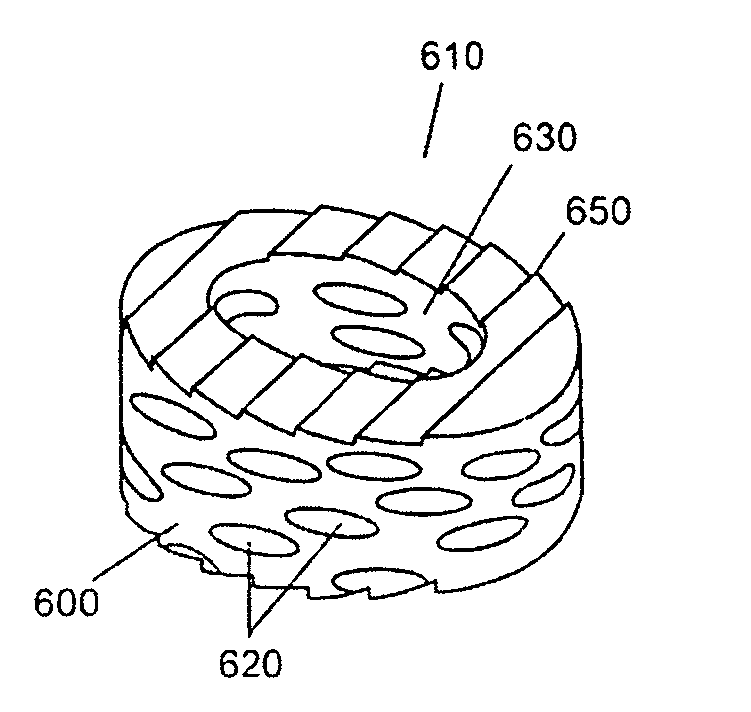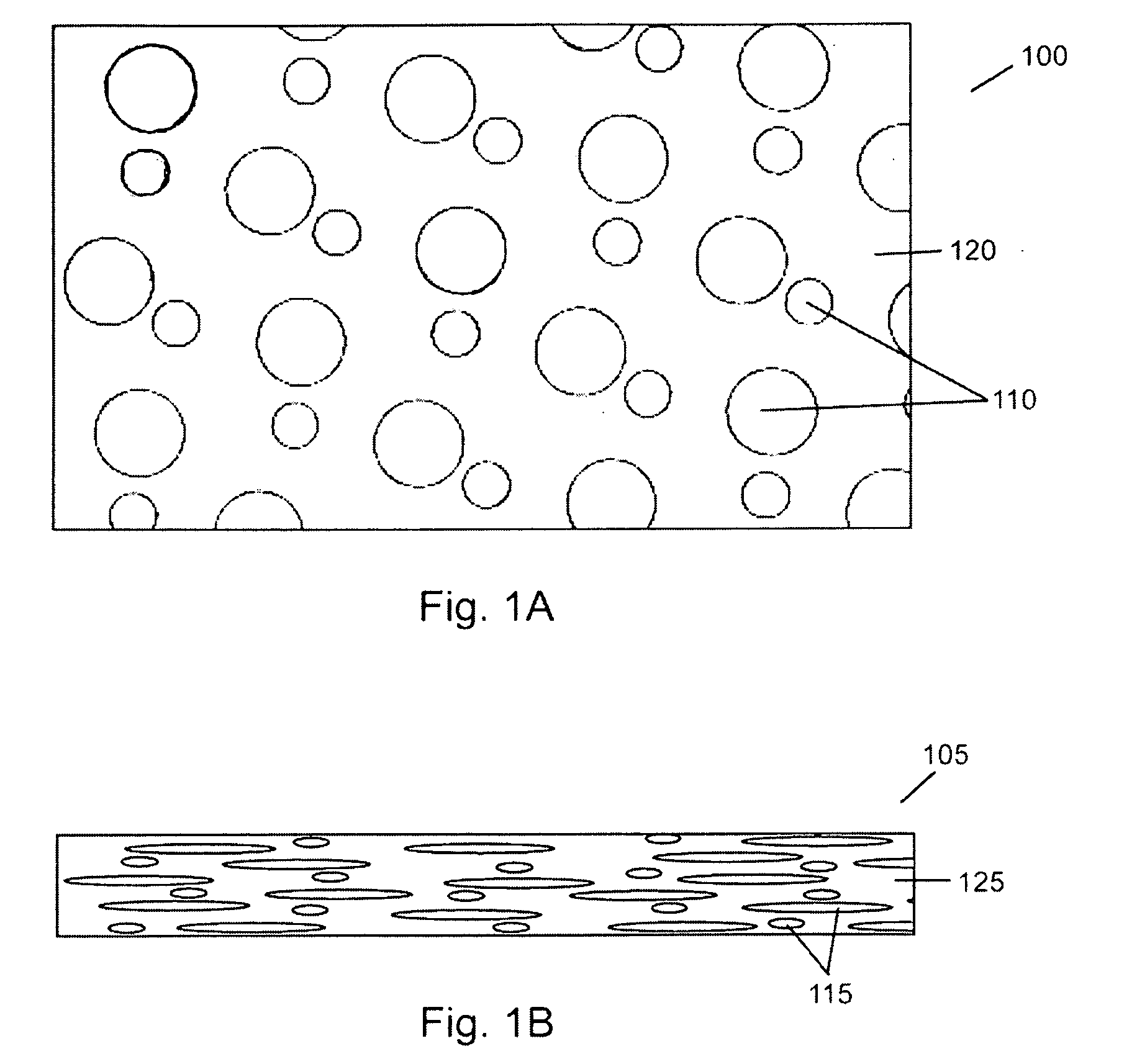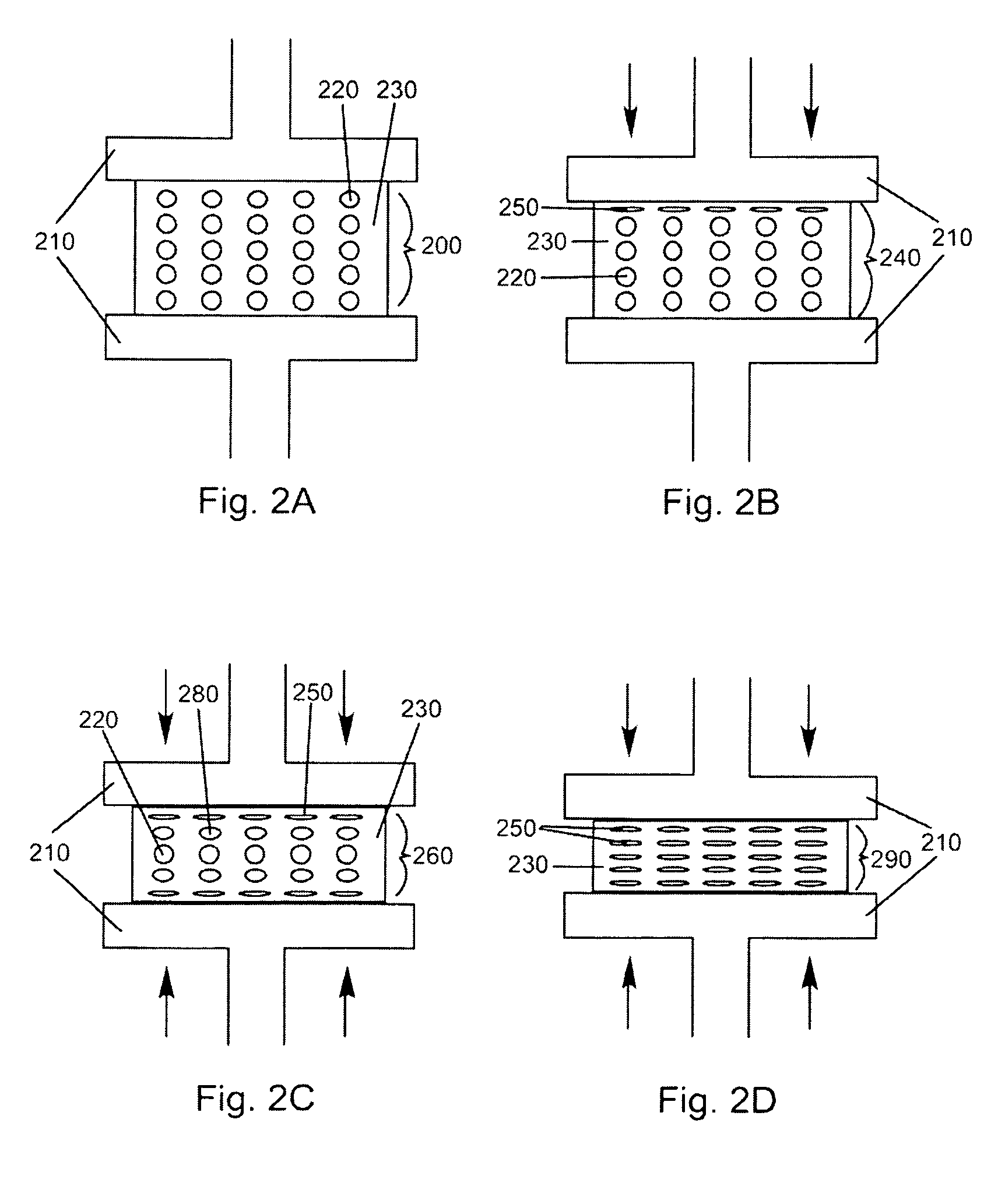Bi-phasic compressed porous reinforcement materials suitable for implant
a compression and reinforcement material technology, applied in the field of surgical devices, can solve the problems of high morbidity at the harvest site, use of bone grafts, and insufficient quantity of graft material for autografts removed from patients, and achieve the effect of high and low porosity zones
- Summary
- Abstract
- Description
- Claims
- Application Information
AI Technical Summary
Benefits of technology
Problems solved by technology
Method used
Image
Examples
example 1
[0181]The objective of this example is to compare the physical properties of different Poly-1-lactide (PLA) porous matrix materials after being compressed 0, 40, 60, and 80% of its original height. Static axial compression tests were performed to measure the maximum compressive loads of the porous matrix materials after being compressed to different percentages of their original height. The compression tests will demonstrate the compressed material's mechanical properties can be altered and controlled over a wide range of possible values. The final properties of the compressed material are determined by the properties of the starting material and the amount of compression used. The final product is a material that has tensile and compressive strengths similar to that of non-porous polymer yet is not as stiff or subject to failure by cracking as non-porous polymer. Mechanical and porosity tests will assure a device fabricated from compressed porous matrix material (e.g., a spinal int...
example 2
[0187]While Example 1 demonstrated that PLA porous matrix materials could be compressed, this example serves to illustrate that porous matrix materials made of different polymers can also be compressed and will compare the physical properties of the two compressed materials. Polylactide / Poly E-Caprolactone (PLA / PCL) and Poly(desaminotyrosyl-tyrosine ethyl carbonate) (PDTE) Carbonate were used to create two different porous matrix materials. The compression, porosity, and wettability tests described in Example 1 were used to test these materials.
[0188]Static axial compression, wettability, and porosity tests were conducted as described in EXAMPLE 1.
[0189]Before compression, the porosities of the PLA / PCL and PDTE Carbonate were 92% and 94%, respectively. Up to 40% compression, the materials show little to no change in porosity. At 80% compression, the more brittle porous material (PDTE Carbonate) had a porosity of 73% compared to 66% porosity for the PLA / PCL material. It should be not...
example 3
[0192]The objective of this example is to report on the results of tests completed on simulated cervical spine spacers. Porous polymer particles, ranging from about 50 microns to about 800 microns, composed of 70 / 30 L-D,L Lactide purchased from Boehringer Ingelheim, with a glass transition of approximately 50 degrees centigrade, were weighed and poured into a mold in the shape of the desired cervical spacer. The mold had the following dimensions: 13 mm O.D.×5 mm I.D.×7 mm in length. Vibration was used to ensure that the particles fully filled the cavity. After compressing this material to the proper dimension, the mold was placed in an oven at 80° C. and allowed to sinter for 2 hours. Once the mold cooled, the spacers were removed, dimensionally measured and weighed. Samples produced had final porosities of approximately 34%, 42% and 50%. The samples were then compression tested utilizing a Lloyd Tensile Tester, Model LR30K. Values at 2% offset yield showed a consistent correlation ...
PUM
| Property | Measurement | Unit |
|---|---|---|
| sizes | aaaaa | aaaaa |
| sizes | aaaaa | aaaaa |
| porosity | aaaaa | aaaaa |
Abstract
Description
Claims
Application Information
 Login to View More
Login to View More - R&D
- Intellectual Property
- Life Sciences
- Materials
- Tech Scout
- Unparalleled Data Quality
- Higher Quality Content
- 60% Fewer Hallucinations
Browse by: Latest US Patents, China's latest patents, Technical Efficacy Thesaurus, Application Domain, Technology Topic, Popular Technical Reports.
© 2025 PatSnap. All rights reserved.Legal|Privacy policy|Modern Slavery Act Transparency Statement|Sitemap|About US| Contact US: help@patsnap.com



